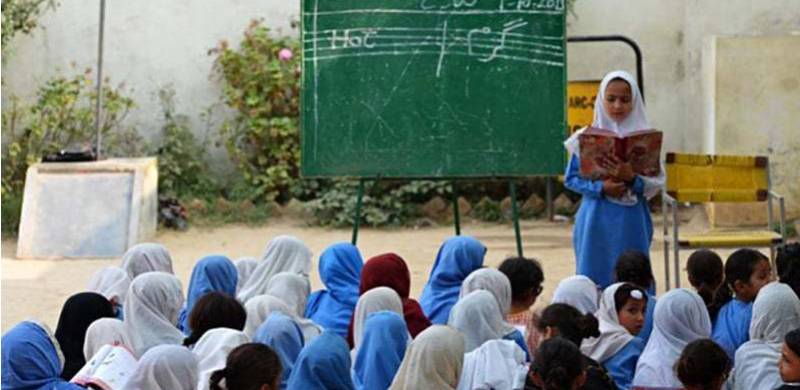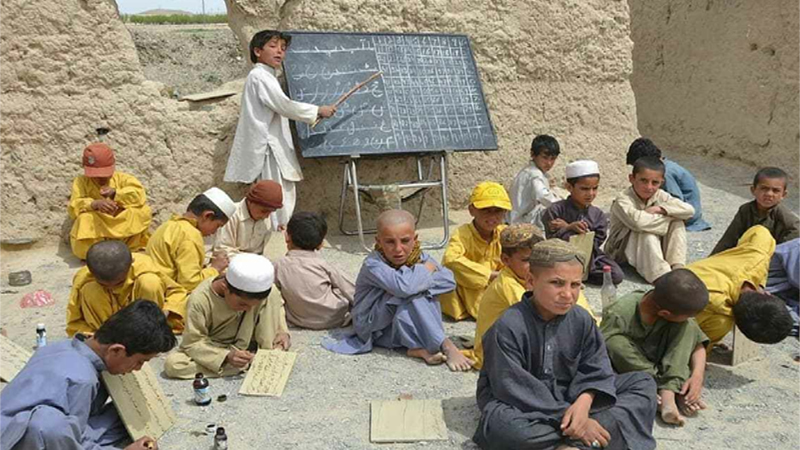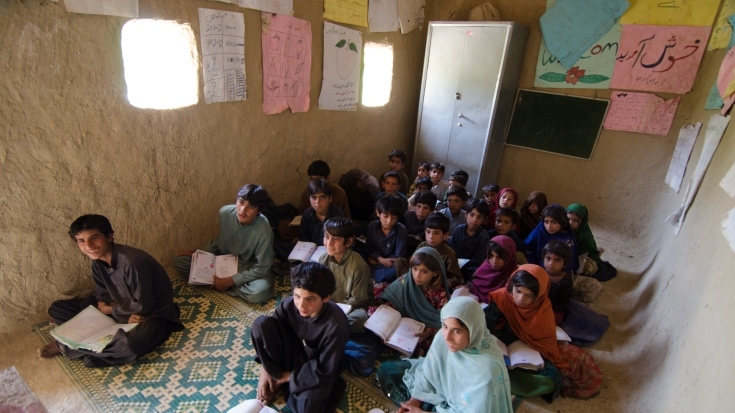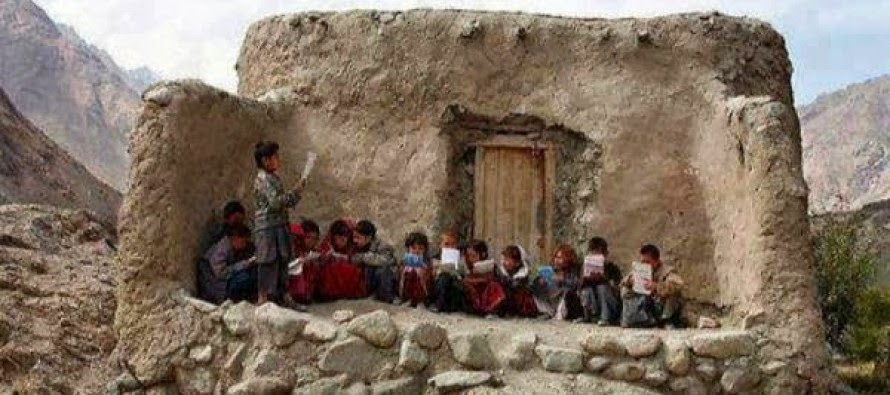
Balochistan province is generally defined as the province which is resource-rich but remains the most underdeveloped province of the country.
Despite realizing this, there is massive illiteracy which has not only devastated the province but also even our youths. According to statistics, 5.02 million out-of-school girls and boys between the ages of 5 and 6 remain to be enrolled in the schools and that Pakistan has the second highest number of out-of-school children in the world after Nigeria.
Pakistan Education Statistic 2015-16 launched by the National Education Management Information System (NEMIS) – a subsidiary of the Ministry of Federal Education and Professional Training revealed that Pakistan’s largest province — Balochistan — has the highest proportion of out-of-school children (70 percent) followed by the Federally Administered Tribal Areas (FATA) (58 percent).

The only reason why Balochistan always has the highest ratio of out-of-school children is because Balochistan’s government has always been neglecting the decades-long education crisis in the province, and has never been sincere in efforts to increase enrollment of out of school children. The figure of 1.8 million out-of-school children, as social workers say, is projected to increase the next year.
It must be noted that Balochistan has around 13,000 government-run schools, 2,500 of which are for girls and the other 10,500 for boys respectively. On the contrary, Balochistan is home to more than 10 million people.
Most of these schools lack infrastructure, such as boundary walls, lack of electricity, toilets and most importantly hygienic drinking water which raises the question what Balochistan government has done to provide quality education to every Baloch youth. Even the number of qualified teachers is far too low. One can often see one teacher attending a class of far too many students under trees, since there is a lack of classrooms.

According to the recent estimation of International Labour Organisation (ILO), 10 million children are child labourers and, according to estimates, 38.4 percent of the youth are illiterate in Pakistan. On top of that, illiterate youth and illiterate children both are obstructions to progress and peace in Balochistan.
Balochistan government started the National Testing Service (NTS) which aims to give academic opportunities to students based on merit. Unfortunately, the programme could not be properly executed because of a lack of teachers.
The provincial government has claimed that it is giving priority to the education sector. It has also allocated Rs 50 million for teachers’ salaries, however teachers remain absent from the schools. It seems as if these teachers only exist on paper.
Last year, the National Accountability Bureau (NAB) was made responsible for investigating embezzlement in the Balochistan educational system. NAB took action against 400 teachers who had used fake certifications to get jobs in schools, but this will not fix the province’s education problems.

During my recent visit to my own native village, Kolahoo, I found the boys and girls high school in shabby conditions. On my query, one of the students told me that they were not interested in studies because they would easily solve the paper through cheating.
While the other said, ”Of what use is education to us?”
Karim, son of a farmer in the village, has a very vigorous desire to get education but unfortunately he is a pauper.
One of the farmers in the village said that he had a son named Amin who had clinched the first position in his first grade but has never gone to school and has been addicted to drugs and snatches mobile phones, wallets and these crimes are common in the village due to illiteracy.
Another little girl, Isra, after passing her fifth grade, was forced to stop pursuing education because there is only a primary school in her village and that she has to go to Tump, another little town, for her higher education but her parents are very poor and both of them work, so she gets no one to drop and pick her from nearby government secondary school.
There are more than hundreds of thousands of Balochs who want to pursue education but not to avail.
Despite the Article 25-A quotes, “the state shall provide free and compulsory education to all children aged five to 16 years”, the state fails to provide education to its youth. The law is quite adequate but has been neglected and thus child labour is piling up rather than coming to an end. Above all, Balochistan government does not only need to provide free education but also free uniforms so that the poorest citizens can also receive at least a basic education. On account of unaffordable uniforms, many children have been expelled from school, resulting in mind boggling illiteracy.
Despite realizing this, there is massive illiteracy which has not only devastated the province but also even our youths. According to statistics, 5.02 million out-of-school girls and boys between the ages of 5 and 6 remain to be enrolled in the schools and that Pakistan has the second highest number of out-of-school children in the world after Nigeria.
Pakistan Education Statistic 2015-16 launched by the National Education Management Information System (NEMIS) – a subsidiary of the Ministry of Federal Education and Professional Training revealed that Pakistan’s largest province — Balochistan — has the highest proportion of out-of-school children (70 percent) followed by the Federally Administered Tribal Areas (FATA) (58 percent).

The only reason why Balochistan always has the highest ratio of out-of-school children is because Balochistan’s government has always been neglecting the decades-long education crisis in the province, and has never been sincere in efforts to increase enrollment of out of school children. The figure of 1.8 million out-of-school children, as social workers say, is projected to increase the next year.
It must be noted that Balochistan has around 13,000 government-run schools, 2,500 of which are for girls and the other 10,500 for boys respectively. On the contrary, Balochistan is home to more than 10 million people.
Most of these schools lack infrastructure, such as boundary walls, lack of electricity, toilets and most importantly hygienic drinking water which raises the question what Balochistan government has done to provide quality education to every Baloch youth. Even the number of qualified teachers is far too low. One can often see one teacher attending a class of far too many students under trees, since there is a lack of classrooms.

According to the recent estimation of International Labour Organisation (ILO), 10 million children are child labourers and, according to estimates, 38.4 percent of the youth are illiterate in Pakistan. On top of that, illiterate youth and illiterate children both are obstructions to progress and peace in Balochistan.
Balochistan government started the National Testing Service (NTS) which aims to give academic opportunities to students based on merit. Unfortunately, the programme could not be properly executed because of a lack of teachers.
The provincial government has claimed that it is giving priority to the education sector. It has also allocated Rs 50 million for teachers’ salaries, however teachers remain absent from the schools. It seems as if these teachers only exist on paper.
Last year, the National Accountability Bureau (NAB) was made responsible for investigating embezzlement in the Balochistan educational system. NAB took action against 400 teachers who had used fake certifications to get jobs in schools, but this will not fix the province’s education problems.

During my recent visit to my own native village, Kolahoo, I found the boys and girls high school in shabby conditions. On my query, one of the students told me that they were not interested in studies because they would easily solve the paper through cheating.
While the other said, ”Of what use is education to us?”
Karim, son of a farmer in the village, has a very vigorous desire to get education but unfortunately he is a pauper.
One of the farmers in the village said that he had a son named Amin who had clinched the first position in his first grade but has never gone to school and has been addicted to drugs and snatches mobile phones, wallets and these crimes are common in the village due to illiteracy.
Another little girl, Isra, after passing her fifth grade, was forced to stop pursuing education because there is only a primary school in her village and that she has to go to Tump, another little town, for her higher education but her parents are very poor and both of them work, so she gets no one to drop and pick her from nearby government secondary school.
There are more than hundreds of thousands of Balochs who want to pursue education but not to avail.
Despite the Article 25-A quotes, “the state shall provide free and compulsory education to all children aged five to 16 years”, the state fails to provide education to its youth. The law is quite adequate but has been neglected and thus child labour is piling up rather than coming to an end. Above all, Balochistan government does not only need to provide free education but also free uniforms so that the poorest citizens can also receive at least a basic education. On account of unaffordable uniforms, many children have been expelled from school, resulting in mind boggling illiteracy.
